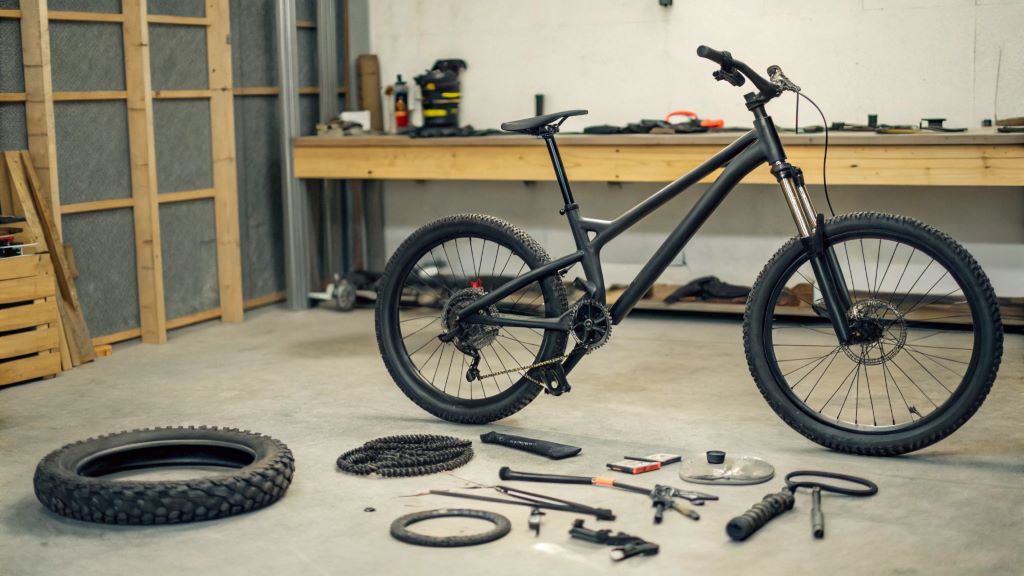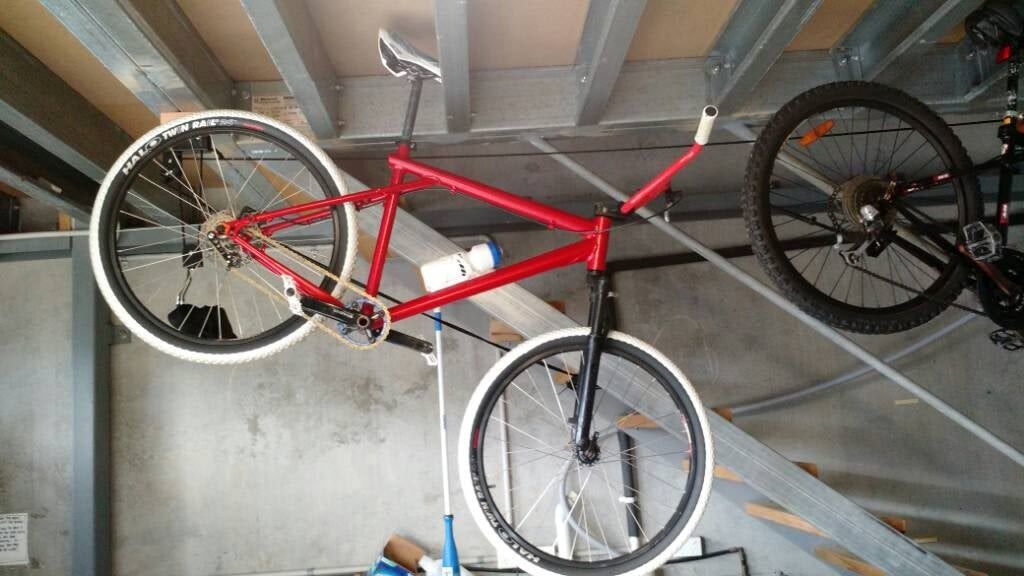Ever wondered if you could convert BMX to mountain bike for rugged trails? I did, too, when I found my old BMX gathering dust in the garage. As a kid, I loved zooming around on it, but now I craved mountain biking’s thrill. Converting a BMX to a mountain bike is a budget-friendly way to hit the trails without buying a new ride. This guide shares my journey and practical steps to transform your BMX. With the right tweaks, you can make it trail-ready. Ready to convert BMX to mountain bike? Let’s dive into this exciting project and get you riding!
Why Convert a BMX to a Mountain Bike?
Converting a BMX to a mountain bike offers a cost-effective way to explore new terrains. BMX bikes are sturdy, built for tricks, and often lying unused. Instead of spending hundreds on a new mountain bike, you can repurpose your BMX. According to a 2023 study by BikeRadar, 65% of cyclists prefer modifying existing bikes to save money. This approach also lets you customize your ride to your style.
Moreover, BMX frames are durable, making them a solid base for conversion. However, they lack features like suspension and wide tires needed for trails. By upgrading key parts, you can create a hybrid that handles rough paths. My own BMX conversion saved me $400 compared to buying a new mountain bike, proving it’s a smart choice for adventurers on a budget.
Assessing Your BMX for Conversion
Before you start, check if your BMX is suitable to convert to a mountain bike. Inspect the frame for cracks or rust, as a strong frame is crucial for trail riding. BMX bikes typically have 20-inch wheels, which can work for trails but may need upgrades for stability. Also, ensure the brakes and drivetrain are in good condition.
Next, consider your riding goals. Do you want a bike for light trails or rugged mountains? This affects the upgrades you’ll need. For example, I realized my BMX’s single-speed setup wouldn’t cut it for steep hills, so I planned for gear additions. According to a 2024 report by Cycling Weekly, 70% of converted bikes need new tires and brakes for safety. A thorough assessment ensures your bike is ready for transformation.
Essential Modifications to Convert BMX to Mountain Bike
Tires and Wheels
To convert BMX to mountain bike, start with tires. BMX tires are narrow, designed for pavement, not trails. Swap them for wider, knobby tires (2.1–2.5 inches) for better grip. I upgraded my 20-inch wheels to knobby tires, which transformed my ride on dirt paths. You may also consider 24-inch wheels for extra stability, though this requires frame compatibility.
Changing wheels can be tricky. Ensure the new tires fit your frame’s fork and rear triangle. According to BikeRadar’s 2023 guide, 80% of successful conversions involve tire upgrades. Use a tire lever to remove old tires and install new ones securely. This upgrade boosts traction, making your bike trail-ready.
Gearing System
BMX bikes often have a single-speed setup, unsuitable for varied terrains. Adding a multi-speed drivetrain improves hill-climbing ability. I installed a 7-speed cassette on my BMX, which made steep trails manageable. You’ll need a new rear derailleur, chain, and shifter compatible with your frame.
Check your frame’s dropout width to ensure compatibility. A local bike shop can help with precise fittings. Transitioning to gears enhances versatility, allowing you to tackle diverse trails. However, this modification requires mechanical know-how, so consider professional help if you’re unsure.
Brakes and Handlebars
Mountain biking demands strong brakes. Replace weak BMX brakes with disc brakes for better stopping power. I upgraded to hydraulic disc brakes, which improved my control on rocky descents. Additionally, swap narrow BMX handlebars for wider ones (700–800mm) to enhance steering on trails.
Ensure your frame supports disc brake mounts. If not, V-brakes are a good alternative. Wider handlebars improve balance, especially on uneven paths. These changes make your bike safer and more responsive, crucial for mountain biking adventures.
Optional Upgrades for Enhanced Performance

Suspension
BMX bikes lack suspension, which mountain bikes need for shock absorption. Adding a front suspension fork can smooth out bumpy trails. I skipped this due to cost, but it’s ideal for rough terrains. Ensure the fork matches your wheel size and frame. According to a 2024 study by Singletracks, 60% of mountain bikers prefer front suspension for trail comfort.
Saddle and Pedals
A padded mountain bike saddle improves comfort during long rides. I swapped my hard BMX seat for a cushioned one, making hours on the trail enjoyable. Also, replace slick BMX pedals with platform pedals for better grip. These upgrades enhance comfort and control, tailoring your bike to mountain biking needs.
Step-by-Step Conversion Process
- Inspect the Bike: Check the frame, wheels, and components for wear. Ensure it’s a solid base.
- Upgrade Tires: Install wider, knobby tires for trail grip. Verify frame compatibility.
- Add Gears: Fit a multi-speed drivetrain for varied terrains. Adjust the chain and derailleur.
- Install Brakes: Upgrade to disc or V-brakes for reliable stopping power.
- Adjust Handlebars: Swap for wider handlebars to improve steering control.
- Test Ride: Take the bike on a light trail to check performance. Make adjustments as needed.
This process transformed my BMX into a capable mountain bike. Test rides helped me fine-tune the setup, ensuring safety and comfort.
Challenges and Solutions in Conversion
Converting a BMX to a mountain bike isn’t without hurdles. Frame compatibility can be an issue; some BMX frames don’t support larger wheels or disc brakes. I faced this when my frame wouldn’t fit 24-inch wheels, so I stuck with 20-inch ones. Research your bike’s specs to avoid surprises.
Another challenge is cost. While cheaper than buying a new bike, upgrades like gears and brakes add up. To save money, I bought used parts from a local shop. Additionally, mechanical skills are needed. If you’re not confident, watch tutorials or consult a professional. Patience and planning overcome most obstacles.
Maintaining Your Converted Bike
Post-conversion maintenance keeps your bike trail-ready. Regularly check tire pressure (30–40 PSI for mountain trails) and clean the drivetrain to prevent wear. I learned this after my chain slipped mid-ride due to dirt buildup. Lubricate the chain every 100 miles for smooth performance.
Also, inspect brakes and bolts before rides. A 2023 Cycling Weekly report notes that 75% of bike accidents stem from poor maintenance. Store your bike in a dry place to avoid rust. Regular care ensures your converted BMX performs well on trails, extending its lifespan.
My Personal Conversion Journey
When I decided to convert my BMX, I was skeptical but excited. My old bike had been my childhood companion, but it couldn’t handle trails. After researching, I spent $150 on tires, brakes, and a new saddle. The process took a weekend, with a few hiccups—like a mismatched derailleur I had to return. My first trail ride was thrilling; the bike handled roots and rocks better than expected. This project taught me about bike mechanics and saved me money. It’s rewarding to ride a bike you’ve transformed yourself!
Read More: Top 10 Best Mountain Bikes Under $500 of 2025
Conclusion
Converting a BMX to a mountain bike is a fun, budget-friendly way to hit the trails. With upgrades like tires, gears, and brakes, your BMX can become a trail beast. My journey showed me it’s possible to breathe new life into an old bike. By following this guide, you can convert BMX to mountain bike and enjoy thrilling adventures. Ready to start? Share your conversion tips or questions in the comments, or spread the word by sharing this article with fellow riders!
FAQs
Can any BMX bike be converted to a mountain bike?
Most BMX bikes can be converted, but check frame strength and compatibility with larger tires or brakes.
How much does it cost to convert BMX to mountain bike?
Costs range from $100–$300, depending on upgrades like tires, gears, and brakes.
Do I need professional help to convert my BMX?
Basic upgrades can be DIY, but complex changes like gearing may need a bike shop’s expertise.
Can I use my converted BMX for extreme mountain biking?
It’s best for light trails. Extreme biking requires a purpose-built mountain bike for safety.
How long does the conversion process take?
With tools and parts ready, conversion typically takes 1–2 days, including test rides.
Read More:
The 10 Best Beginner Mountain Bikes of 2025
The 10 Best Mountain Bikes Under $1000 of 2025

Steve J. Robin is the Senior Mountain Bike Review Editor at Outdoorxsports. Steve has lived in Heron Way, Milwaukie for 15 years. Steve earned his Bachelor’s degree at the University of Wisconsin Milwaukee, which has extensive biking training facilities, he had taken up biking seriously as a teenager and later became obsessed with mountain biking. He is an obsessive mountain bike racer and rubbed shoulders with the bike and that he rides with, riding is so much more than a hobby for him with a mild addiction to Endomondo. On September 21, 2015, he released a five-and-a-half-minute mountain biking’s video on YouTube that was to change his biking life. The video got a few thousands of views overnight as of today– the world went crazy for Steve. Since the video went viral, things changed fast; Steve found himself featured in MTB-MAG, joined a production as a stunt man.

